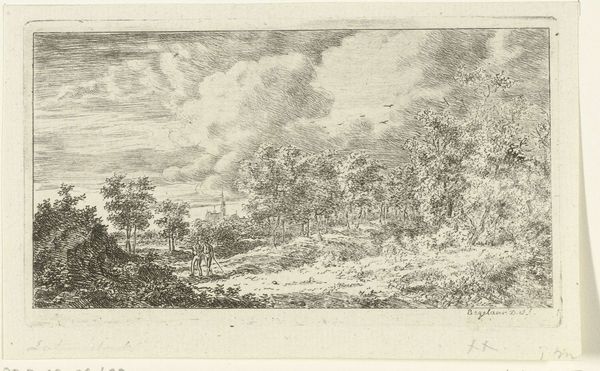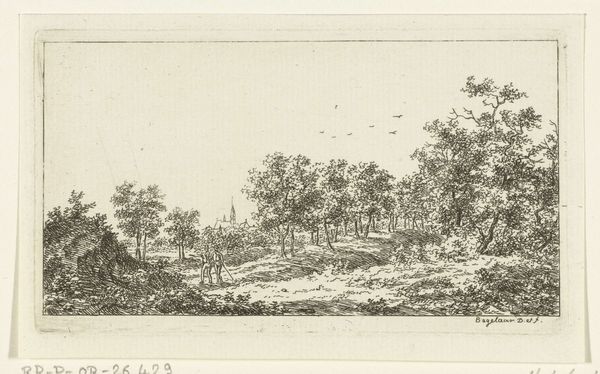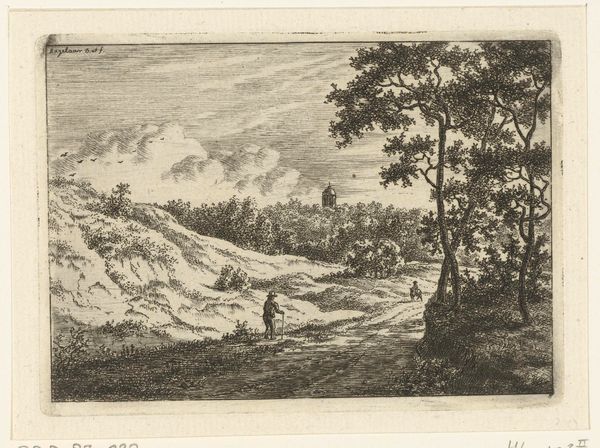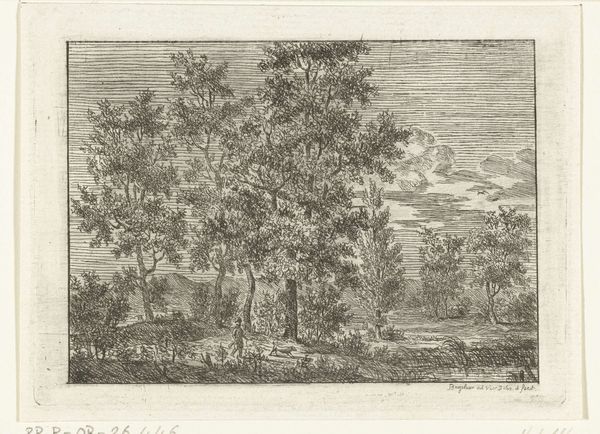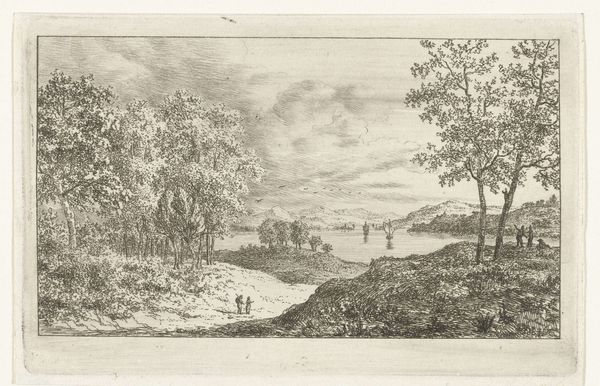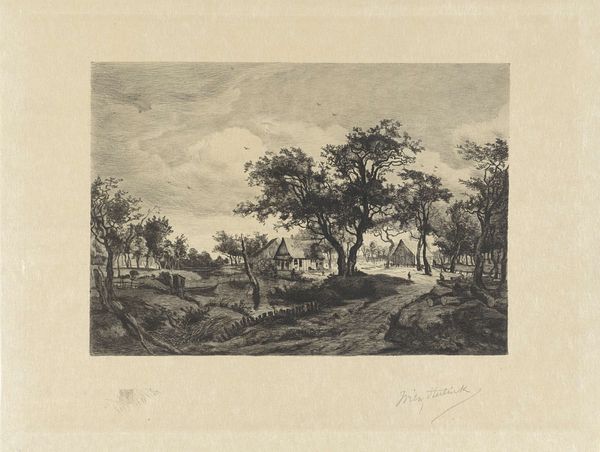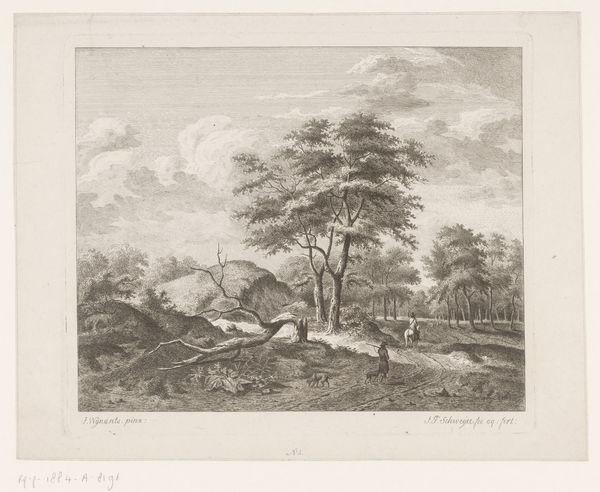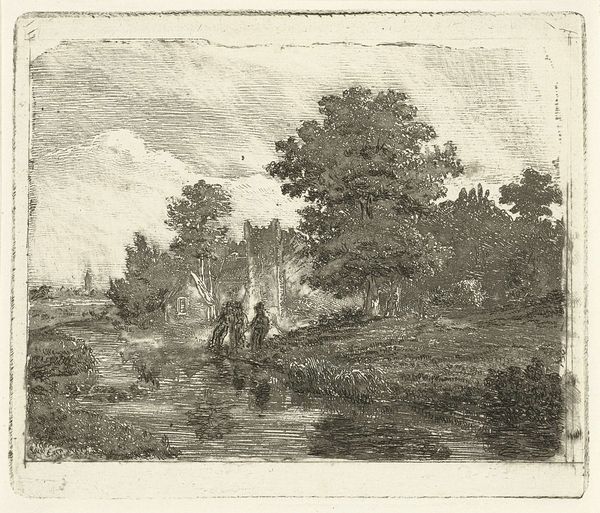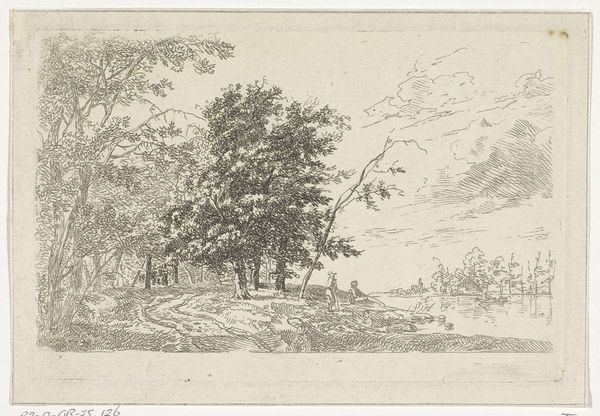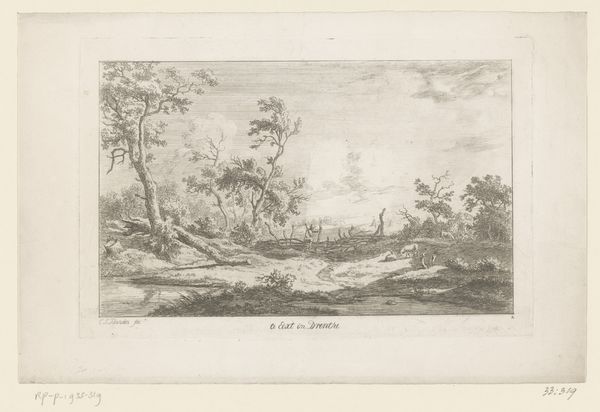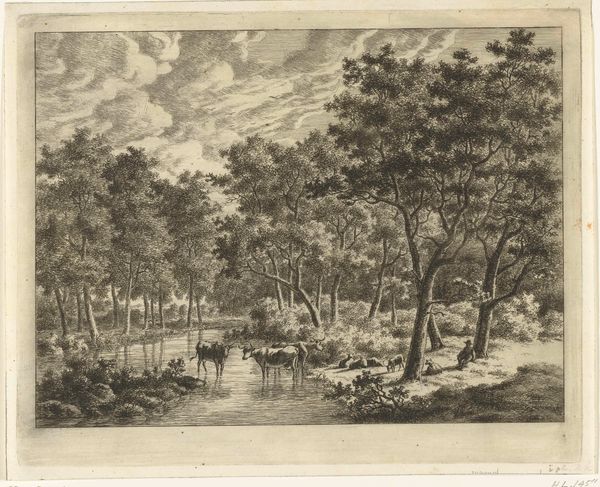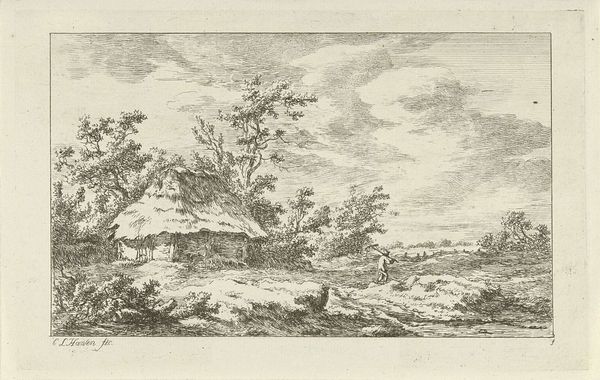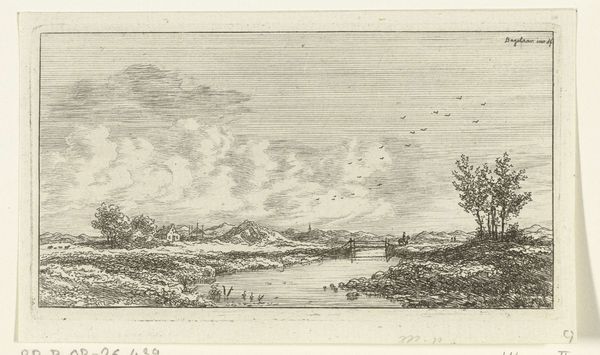
print, etching
# print
#
etching
#
landscape
#
etching
#
romanticism
#
realism
Dimensions: height 73 mm, width 128 mm
Copyright: Rijks Museum: Open Domain
Ernst Willem Jan Bagelaar made this etching, titled "Landscape with Two Walkers," in the Netherlands, likely in the early 19th century. The image presents a seemingly simple scene of two figures traversing a path through a wooded area, with a town spire visible in the distance. But what did landscape imagery mean for the Dutch at this time? The period saw significant political upheaval, including French occupation, and landscape became a powerful means of expressing national identity. The idealized view of the Dutch countryside served as a reminder of what was worth fighting for, and who they were as a people. The church in the background becomes not just a landmark, but a symbol of community and shared values. To fully appreciate Bagelaar's work, we need to consult historical archives, maps, and political documents. Art history, at its best, offers a window into the complex interplay between art, society, and institutions.
Comments
No comments
Be the first to comment and join the conversation on the ultimate creative platform.
